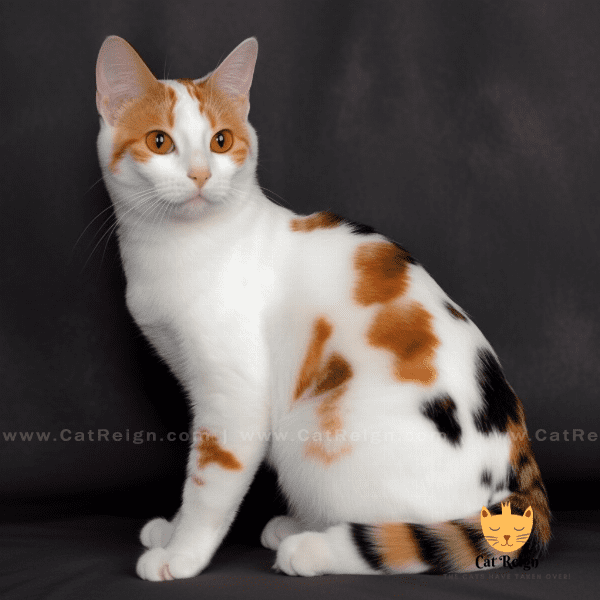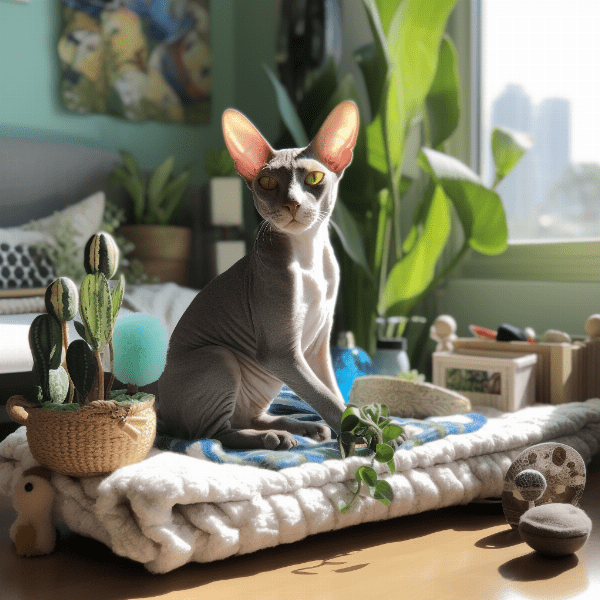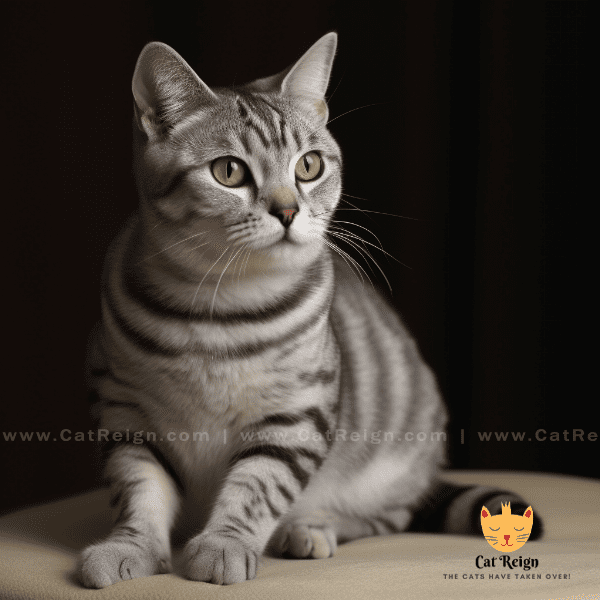Table of Contents
- History and Origin of Japanese Bobtail Cats
- Physical Characteristics of Japanese Bobtail Cats
- Personality Traits and Temperament of Japanese Bobtail Cats
- Japanese Bobtail Cats’ Health and Care Needs
- Feeding and Grooming Japanese Bobtail Cats
- Japanese Bobtail Cats’ Exercise and Playtime Requirements
- Training Japanese Bobtail Cats: Tips and Techniques
- Living with Japanese Bobtail Cats: Pros and Cons
- Understanding Japanese Bobtail Cats’ Vocalizations and Body Language
- Popular Breeds of Japanese Bobtail Cats and Their Unique Features.
History and Origin of Japanese Bobtail Cats
The Japanese Bobtail cat, also known as the Mi-Ke in Japan, is a domestic cat breed with a short, stubby tail that is unique to the breed. This feline has been revered in Japan for centuries and is often depicted in Japanese art and literature.
Early Origins
It is believed that the Japanese Bobtail cat first originated in China and Korea before being brought to Japan several centuries ago. The breed is closely tied to Japanese culture and is considered a national treasure in Japan.
Cultural Significance
The Japanese Bobtail cat has played an important role in Japanese folklore and mythology for centuries. In Japanese culture, the cat is considered a symbol of good luck and is believed to bring prosperity and good fortune to its owner. The breed is also closely associated with the Maneki-Neko, a popular Japanese figurine of a cat with its paw raised in a beckoning gesture.
Relationship with the Japanese People
The Japanese Bobtail cat has been a beloved companion to the Japanese people for centuries. In fact, it was often kept as a pet by the Japanese aristocracy and was believed to bring good luck and prosperity to its owners. Today, the breed is still very popular in Japan and can be seen in various aspects of Japanese culture, from art and literature to popular culture and media.
Arrival in the West
The Japanese Bobtail cat was first introduced to the West in the late 1800s, when a few of these cats were brought to the United States as gifts to prominent Americans. However, it wasn’t until the 1960s that the breed began to gain popularity in the West, with the establishment of breeding programs and cat clubs dedicated to the Japanese Bobtail cat.
Conclusion
The history and origin of the Japanese Bobtail cat is a fascinating story that highlights the breed’s close ties to Japanese culture and mythology. Today, the breed is a beloved companion to many people around the world and continues to be celebrated for its unique physical features and charming personality.
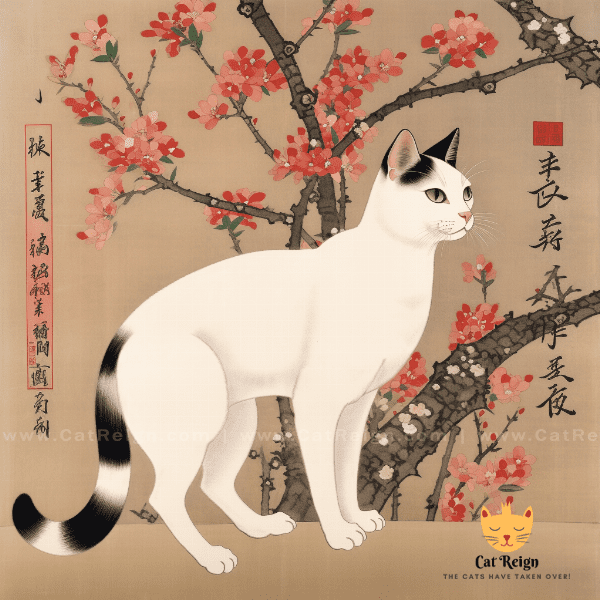
Physical Characteristics of Japanese Bobtail Cats
The Japanese Bobtail cat is a medium-sized breed with a distinct, short, and stubby tail. Their unique appearance is one of their most striking features, but there is much more to this breed’s physical characteristics.
Body Shape and Size
The Japanese Bobtail cat has a muscular, compact body with a rounded head and large, oval-shaped eyes. They have a medium-sized build, with males weighing between 7-10 pounds and females weighing between 5-8 pounds.
Coat and Color
The Japanese Bobtail cat has a medium-length, soft and silky coat that can come in a variety of colors and patterns. They have a wide range of colors, including white, black, red, cream, and blue, and can be either solid or patterned. The most common pattern is the “Mi-Ke” pattern, which consists of a white base with black and red patches.
Ears and Eyes
The Japanese Bobtail cat has large, expressive eyes that are typically a shade of green or gold. Their ears are medium-sized and have a slightly rounded tip, giving them an adorable appearance.
Tail
The most distinctive feature of the Japanese Bobtail cat is, of course, their short, bobbed tail. The tail can be anywhere from 2-10 centimeters long and has a pom-pom-like appearance. The tail is caused by a genetic mutation, and each cat’s tail is unique and can vary in length and shape.
Conclusion
The physical characteristics of the Japanese Bobtail cat make them a truly unique and distinctive breed. Their muscular build, oval-shaped eyes, and medium-length coat come in a variety of colors and patterns. However, it is their short, bobbed tail that sets them apart from other breeds and makes them instantly recognizable.
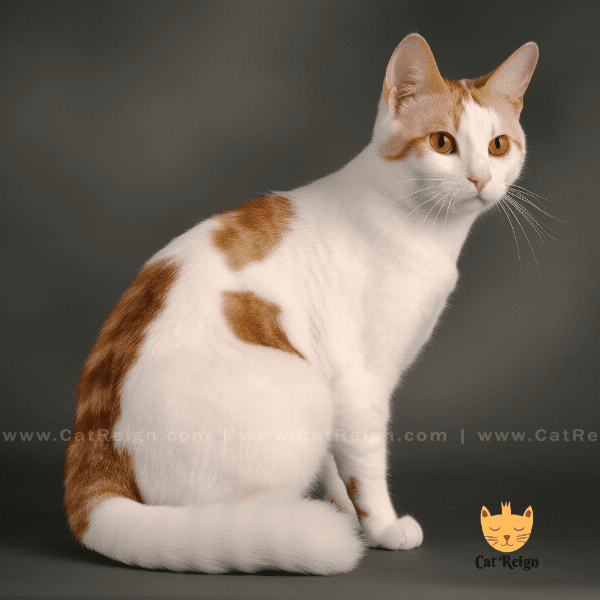
Personality Traits and Temperament of Japanese Bobtail Cats
The Japanese Bobtail cat is known for its charming personality and friendly nature. They are a highly intelligent breed and have a strong connection with their owners. Here are some of their notable personality traits and temperament:
Affectionate and Social
Japanese Bobtail cats are highly affectionate and social cats that thrive on human interaction. They are very friendly and love to spend time with their owners, often following them around the house or sitting in their laps for hours. They enjoy being petted and will often purr loudly to show their contentment.
Intelligent and Curious
The Japanese Bobtail cat is a highly intelligent breed that loves to explore and investigate their surroundings. They are curious by nature and enjoy learning new things. Owners should provide them with plenty of mental stimulation, including interactive toys and puzzles, to keep their minds sharp and engaged.
Vocal and Communicative
Japanese Bobtail cats are known for their vocalizations and can be quite chatty at times. They are highly communicative and use a variety of sounds to express their needs and emotions. Owners should pay attention to their vocalizations and body language to better understand their cat’s mood and needs.
Conclusion
The Japanese Bobtail cat is a friendly, affectionate, and intelligent breed that makes a wonderful companion for those who are willing to give them the attention and care they need. They are playful and energetic, with a strong love for human interaction. Owners who understand their cat’s unique personality and temperament will be rewarded with a loving and loyal companion for years to come.

Japanese Bobtail Cats’ Health and Care Needs
The Japanese Bobtail cat is generally a healthy breed with a lifespan of 12-16 years. However, like all cats, they require proper care and attention to maintain their health and well-being. Here are some of their health and care needs:
Grooming Needs
The Japanese Bobtail cat has a medium-length, soft and silky coat that requires regular grooming to prevent matting and tangles. They should be brushed once or twice a week to remove loose hair and keep their coat looking healthy and shiny. Regular nail trimming, tooth brushing, and ear cleaning are also important parts of their grooming routine.
Feeding Needs
The Japanese Bobtail cat should be fed a high-quality, balanced diet that meets their nutritional needs. Owners should provide them with plenty of fresh water and avoid overfeeding to prevent obesity, which can lead to health problems later in life.
Exercise Needs
The Japanese Bobtail cat is an active breed that requires regular exercise to stay healthy and happy. Owners should provide them with plenty of opportunities to play and explore, including interactive toys, scratching posts, and climbing structures.
Health Issues
The Japanese Bobtail cat is generally a healthy breed, but like all cats, they are prone to certain health issues. These can include feline lower urinary tract disease, dental problems, and obesity. Regular veterinary check-ups and preventive care can help detect and treat these issues early.
Conclusion
The Japanese Bobtail cat is a generally healthy breed that requires proper care and attention to maintain their health and well-being. Owners should provide them with a nutritious diet, regular exercise, and proper grooming to keep them happy and healthy. Regular veterinary check-ups are also important to ensure their long-term health and well-being.

Feeding and Grooming Japanese Bobtail Cats
Feeding and grooming are essential parts of caring for your Japanese Bobtail cat. Proper nutrition and grooming will help ensure your cat’s health and happiness. Here are some tips for feeding and grooming your Japanese Bobtail cat:
Feeding
The Japanese Bobtail cat requires a balanced and nutritious diet that meets their unique nutritional needs. High-quality commercial cat food is an excellent choice, but owners should ensure that it contains all the necessary nutrients and avoid overfeeding. Overfeeding can lead to obesity and other health problems, so it is important to provide the correct portion sizes and avoid giving them too many treats.
Grooming
The Japanese Bobtail cat has a medium-length, soft and silky coat that requires regular grooming to keep it looking healthy and shiny. Owners should brush their cat’s coat at least once a week to remove loose hair and prevent matting. They should also trim their cat’s nails, clean their ears, and brush their teeth regularly to maintain their overall health and hygiene.
Bathing
Bathing your Japanese Bobtail cat should be done only as needed. Their coat is naturally self-cleaning, and too much bathing can strip their coat of essential oils, leading to skin irritation and dryness. When bathing, use a gentle, cat-specific shampoo and rinse thoroughly. Avoid getting water in their ears and eyes, and dry them off completely with a towel.
Hydration
The Japanese Bobtail cat requires access to fresh, clean water at all times. Owners should provide them with a clean water bowl and change the water frequently to ensure it is fresh.
Conclusion
Feeding and grooming are important aspects of caring for your Japanese Bobtail cat. A nutritious diet, regular grooming, and proper hydration will help keep your cat healthy, happy, and looking their best. By following these tips, you can help ensure that your Japanese Bobtail cat enjoys a long and healthy life.
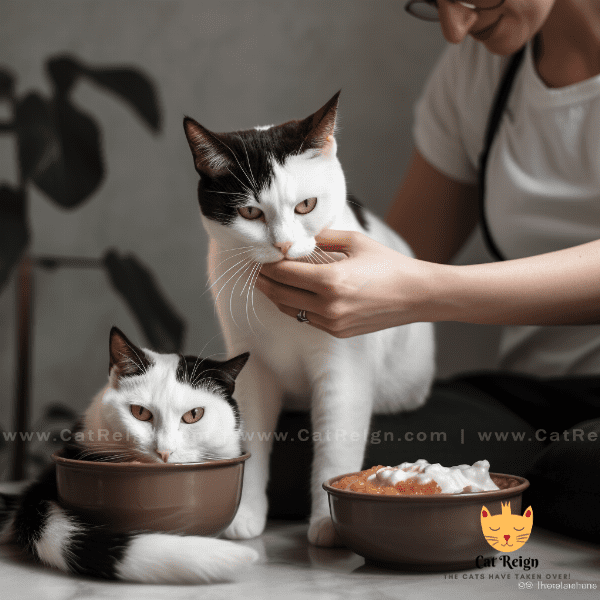
Japanese Bobtail Cats’ Exercise and Playtime Requirements
The Japanese Bobtail cat is an active and playful breed that requires regular exercise and playtime to stay healthy and happy. Here are some tips for providing your cat with the exercise and playtime they need:
Interactive Toys
Interactive toys are a great way to keep your Japanese Bobtail cat mentally and physically stimulated. Toys that stimulate their natural hunting instincts, such as feather wands, laser pointers, and catnip toys, can provide hours of entertainment and exercise.
Scratching Posts
Scratching is a natural behavior for cats, and providing your Japanese Bobtail cat with a scratching post can help prevent them from scratching furniture and other household items. Scratching posts also provide your cat with a great opportunity to stretch and exercise.
Climbing Structures
Japanese Bobtail cats love to climb and explore their surroundings. Providing them with a cat tree or other climbing structure can give them the opportunity to climb and play, as well as provide them with a comfortable place to rest.
Playtime with their Owners
The Japanese Bobtail cat loves human interaction and enjoys playing with their owners. Spending time playing with your cat, whether it’s playing a game of chase or throwing a toy, can provide them with the exercise and attention they need.
Conclusion
The Japanese Bobtail cat is an active and playful breed that requires regular exercise and playtime to stay healthy and happy. Owners should provide their cats with interactive toys, scratching posts, climbing structures, and plenty of opportunities to play and interact with their owners. By providing them with the exercise and stimulation they need, you can help ensure that your Japanese Bobtail cat enjoys a long and happy life.
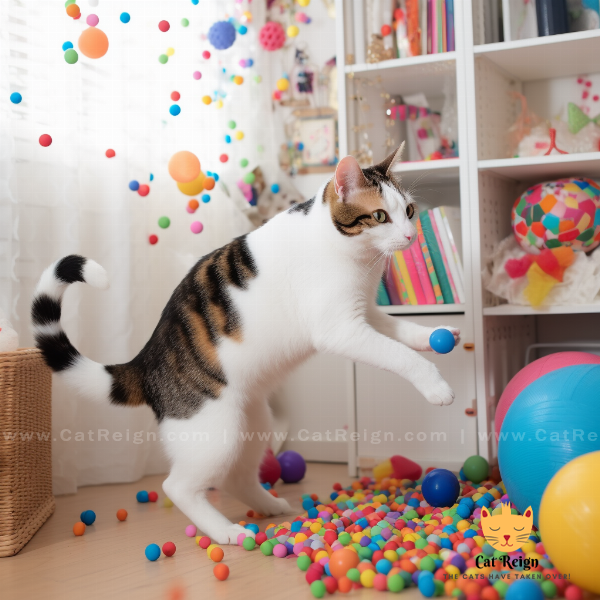
Training Japanese Bobtail Cats: Tips and Techniques
Training your Japanese Bobtail cat is an important part of their overall care and can help strengthen the bond between you and your cat. Here are some tips and techniques for training your Japanese Bobtail cat:
Positive Reinforcement
Positive reinforcement is a great way to train your Japanese Bobtail cat. This involves rewarding your cat with treats, praise, or affection when they exhibit the desired behavior. Positive reinforcement is more effective than punishment, which can cause fear and anxiety in your cat.
Litter Box Training
Litter box training is an essential part of owning a cat. To litter box train your Japanese Bobtail cat, provide them with a clean litter box in a quiet and private location. Show them where the litter box is and encourage them to use it. When they do use the litter box, reward them with praise or a treat.
Clicker Training
Clicker training is a popular training technique that involves using a clicker to signal to your cat when they have exhibited the desired behavior. Clicker training can be used to train your Japanese Bobtail cat to do tricks or to modify their behavior.
Training for Scratching
Scratching is a natural behavior for cats, but it can be destructive to furniture and other household items. To train your Japanese Bobtail cat to scratch in appropriate locations, provide them with a scratching post and encourage them to use it. When they do use the scratching post, reward them with praise or a treat.
Conclusion
Training your Japanese Bobtail cat is an important part of their overall care and can help strengthen the bond between you and your cat. Positive reinforcement, litter box training, clicker training, and training for scratching are all effective techniques for training your cat. By providing your Japanese Bobtail cat with the proper training and attention, you can help ensure that they grow up to be well-behaved and happy cats.
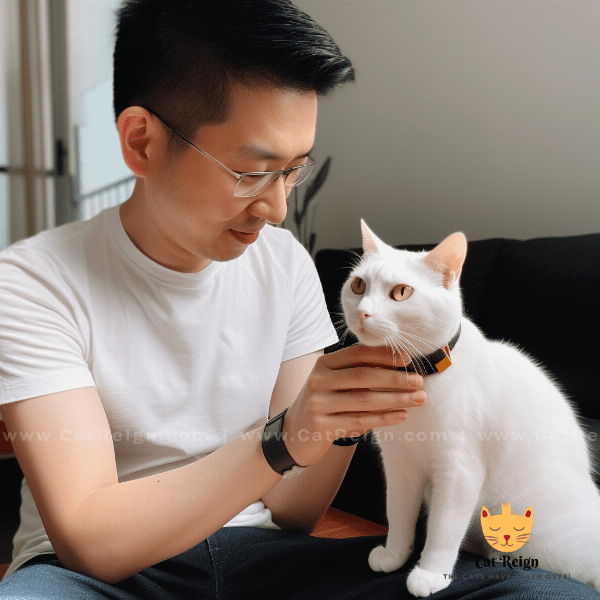
Living with Japanese Bobtail Cats: Pros and Cons
Owning a Japanese Bobtail cat can be a wonderful experience, but it is important to consider the pros and cons before bringing one into your home. Here are some of the pros and cons of living with a Japanese Bobtail cat:
- Affectionate and social: Japanese Bobtail cats are known for their affectionate and social nature, and they love to spend time with their owners.
- Unique appearance: The Japanese Bobtail cat’s distinctive, short, and stubby tail makes them instantly recognizable and adds to their charm.
- Playful and energetic: Japanese Bobtail cats are an active and playful breed that enjoys games and toys.
- Low-maintenance grooming: Their medium-length coat requires only weekly brushing, making them low-maintenance in terms of grooming.
- Vocalizations: Japanese Bobtail cats are known for their vocalizations and can be quite chatty at times, which may not be suitable for those who prefer a quieter household.
- High energy level: Their high energy level may require more playtime and exercise than some other breeds.
- Health issues: Like all cats, Japanese Bobtail cats are prone to certain health issues such as feline lower urinary tract disease and dental problems, which may require regular veterinary care.
- Special considerations for their tail: Due to their unique tail, Japanese Bobtail cats may require special considerations, such as avoiding heavy objects that could injure their tail.
Conclusion
Owning a Japanese Bobtail cat can be a rewarding experience, but it is important to consider the pros and cons before bringing one into your home. Their affectionate and social nature, unique appearance, and low-maintenance grooming are some of the pros, while their vocalizations, high energy level, health issues, and special considerations for their tail are some of the cons. By considering these factors, you can make an informed decision about whether a Japanese Bobtail cat is the right pet for you.

Understanding Japanese Bobtail Cats’ Vocalizations and Body Language
Japanese Bobtail cats use a variety of vocalizations and body language to communicate their needs and emotions. Understanding their vocalizations and body language can help you better understand your cat’s mood and needs. Here are some common vocalizations and body language signals that Japanese Bobtail cats use:
- Meowing: Japanese Bobtail cats meow to communicate a variety of needs and emotions, such as hunger, affection, or anxiety.
- Purring: Purring is a sign of contentment in cats and may indicate that your Japanese Bobtail cat is feeling happy and relaxed.
- Hissing: Hissing is a sign of fear or aggression and may indicate that your cat feels threatened or uncomfortable.
- Chirping: Chirping is a unique vocalization that Japanese Bobtail cats use when they are excited or trying to get your attention.
- Tail position: The position of your Japanese Bobtail cat’s tail can indicate their mood. A high, upright tail indicates that they are feeling confident and happy, while a low or tucked tail may indicate fear or anxiety.
- Ear position: The position of your cat’s ears can also indicate their mood. Forward-facing ears indicate that they are alert and interested, while flattened or backward-facing ears may indicate fear or aggression.
- Eye contact: Direct eye contact is a sign of trust and affection in cats, while avoiding eye contact may indicate fear or discomfort.
- Body posture: A relaxed, upright posture indicates that your Japanese Bobtail cat is feeling confident and happy, while a crouched or tense posture may indicate fear or anxiety.
Conclusion
Understanding your Japanese Bobtail cat’s vocalizations and body language can help you better understand their mood and needs. Meowing, purring, hissing, and chirping are all common vocalizations that they may use, while their tail position, ear position, eye contact, and body posture can all provide clues to their mood. By paying attention to their vocalizations and body language, you can provide them with the care and attention they need to live a happy and healthy life.
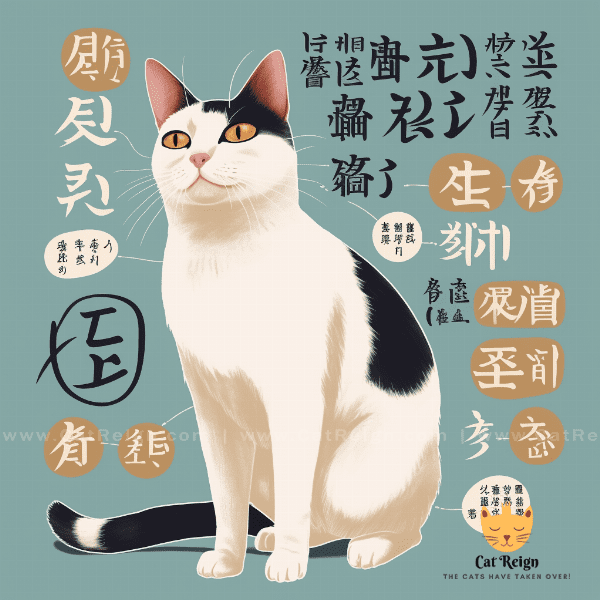
Popular Breeds of Japanese Bobtail Cats and Their Unique Features.
There are several different breeds of Japanese Bobtail cats, each with their own unique features and characteristics. Here are some popular breeds of Japanese Bobtail cats and their unique features:
Mi-Ke
The Mi-Ke, or “three-fur” in Japanese, is a tri-colored Japanese Bobtail cat with white, black, and red fur. They are known for their playful and affectionate nature, as well as their unique coat pattern.
Yamaneko
The Yamaneko, or “mountain cat” in Japanese, is a rare breed of Japanese Bobtail cat that is native to the mountains of Japan. They have a long, fluffy coat that helps protect them from the cold mountain climate.
Kurilian Bobtail
The Kurilian Bobtail is a breed of cat that originated in the Kuril Islands, which are located between Russia and Japan. They have a short, curly tail that is unique to the breed, as well as a thick coat that helps protect them from the cold climate.
American Bobtail
The American Bobtail is a breed of cat that was developed in the United States. They have a short, stubby tail that is similar in appearance to the Japanese Bobtail cat, as well as a playful and affectionate nature.
Conclusion
There are several different breeds of Japanese Bobtail cats, each with their own unique features and characteristics. The Mi-Ke is a tri-colored cat known for their playful and affectionate nature, while the Yamaneko is a rare breed native to the mountains of Japan with a long, fluffy coat. The Kurilian Bobtail is a breed from the Kuril Islands with a short, curly tail, and the American Bobtail is a breed developed in the United States with a playful and affectionate nature. By considering the unique features and characteristics of each breed, you can choose the Japanese Bobtail cat that is right for you.
